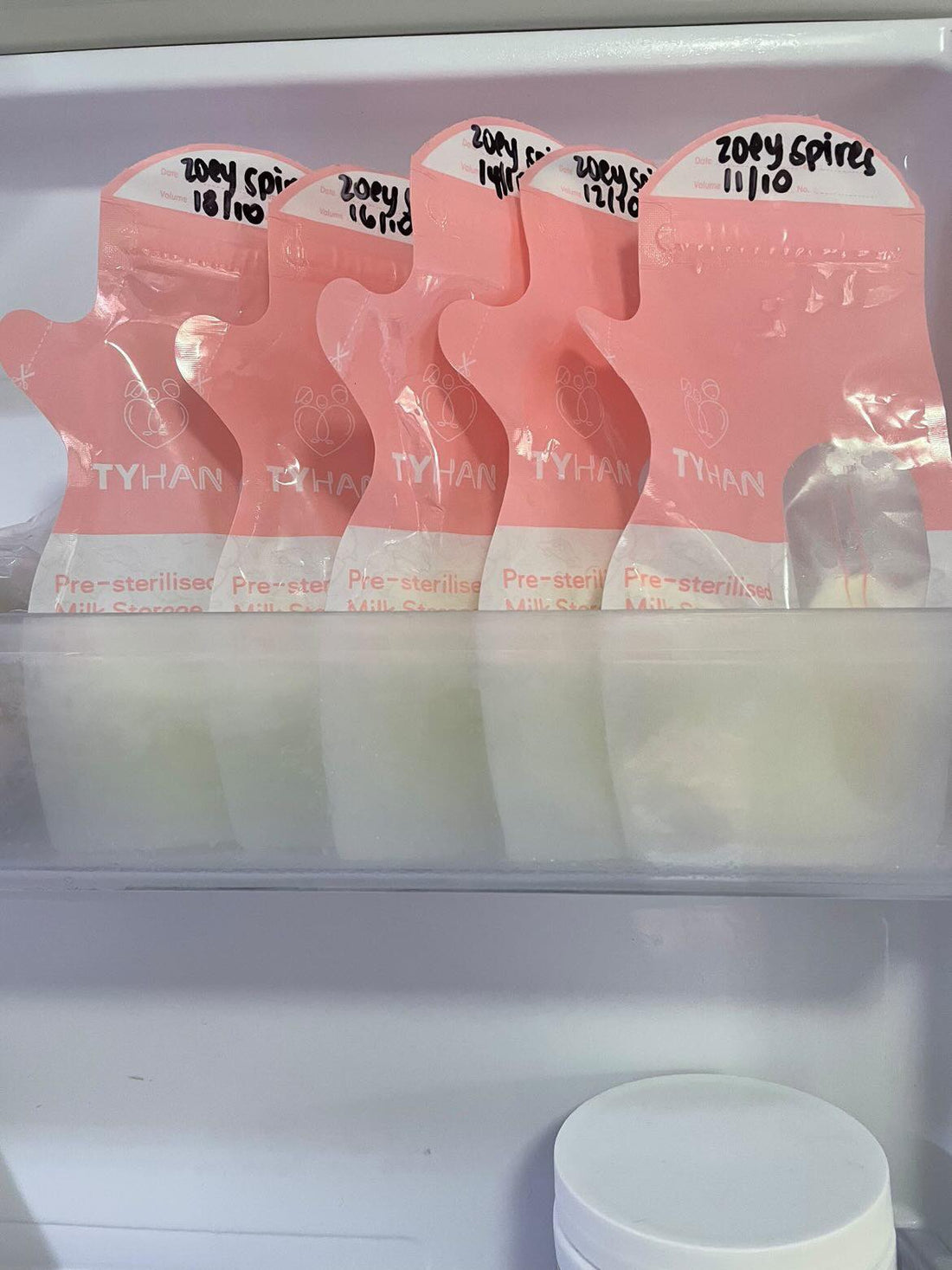How to store breast milk: Tips for keeping your milk fresh and safe.
Breast milk is an excellent source of nutrition for your baby, and it's crucial to ensure that it's stored safely to maintain its quality and prevent contamination. Proper storage techniques can help you maintain a steady supply of breast milk if you're not able to breastfeed or even just for emergencies or days away from bub.
In this blog, we'll take a look at some tips for storing breast milk safely.

Things to remember before pumping
- Follow the manufacturer’s recommendations on how to wash, sterilize and assemble the pump.
- If this is the first time using your breast pump, it may take a few trys in getting comfortable and finding right settings for you.
- Start with using a low suction and then increase as you feel comfortable.
- If you are storing the milk in the refrigerator or freezer, make sure to label the container with the date the milk was expressed.
1. Choose the right container
When storing breast milk, it's essential to choose the right container. The container you choose should be made of food-grade plastic, glass or silicone. Avoid using regular plastic bags, as they may not be sterile and may contain harmful chemicals that could contaminate your breast milk. You should also make sure that the container is airtight and leak-proof. Pre-sterilized breast milk storage bags are a great option for space saving and affordability.
Some important things to check for when choosing storage containers;
- Measurement markings on the side of the container, allowing you to see how much milk you have stored
- Leak-proof design
- BPA and pre-sterilized, ensuring safety for your baby
- Stackable design, meaning less space taken up in the fridge/freezer
- Date indicator on the container to keep track of when the milk was expressed
- Convenient pouring spout to prevent spillages
- Ability to withstand high heat for safe and easy thawing

2. Label your milk
- Date
- Time
3. Store milk in small portions

4. Store milk in the back of the fridge or freezer
5. Follow the "first in, first out" rule
6. Thaw milk safely
Storing breast milk safely is essential to maintain its quality and prevent contamination. By following these tips, you can ensure that your baby gets the freshest, most nutritious milk possible.
SHOP MILK STORAGE BAGS

